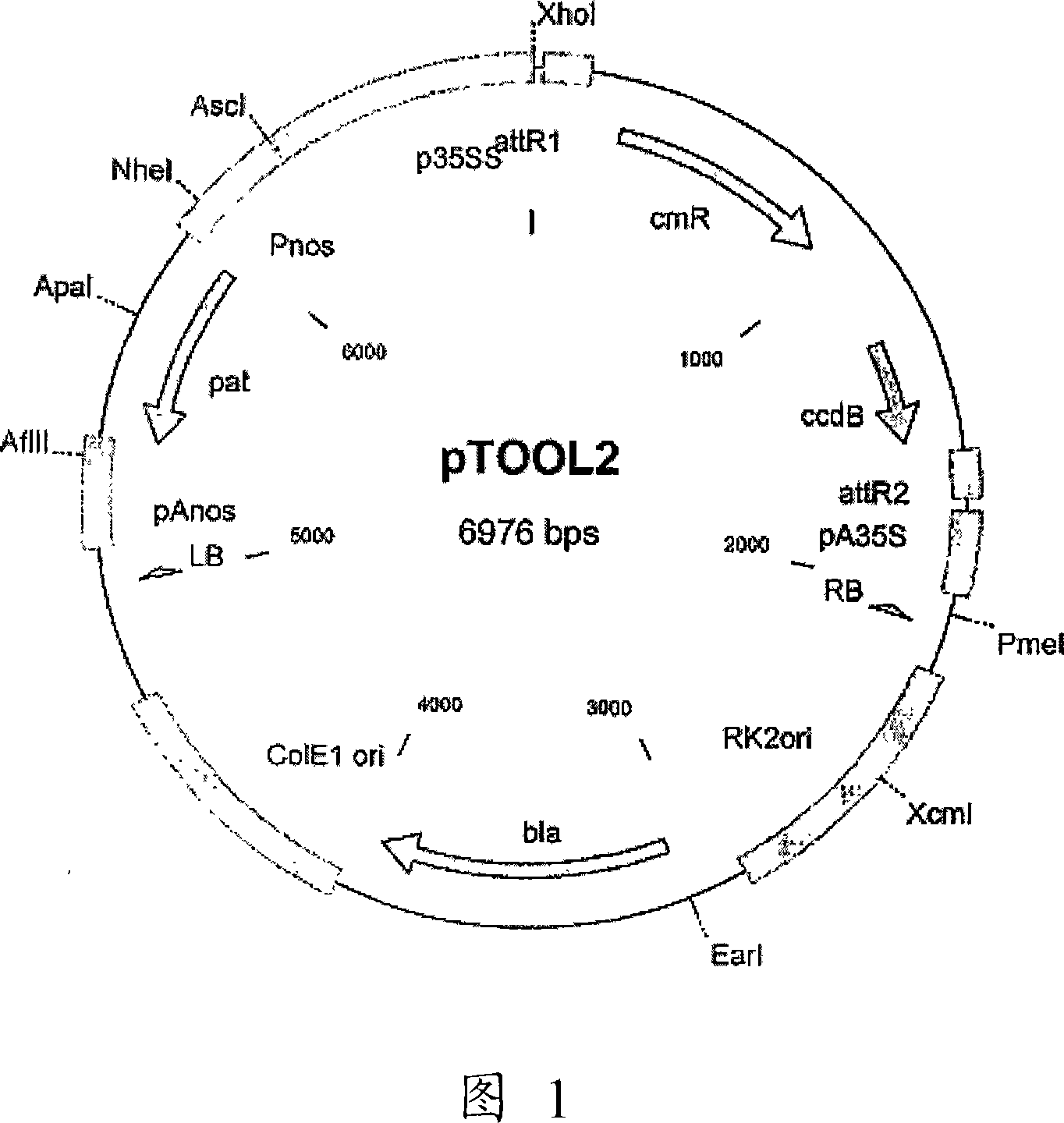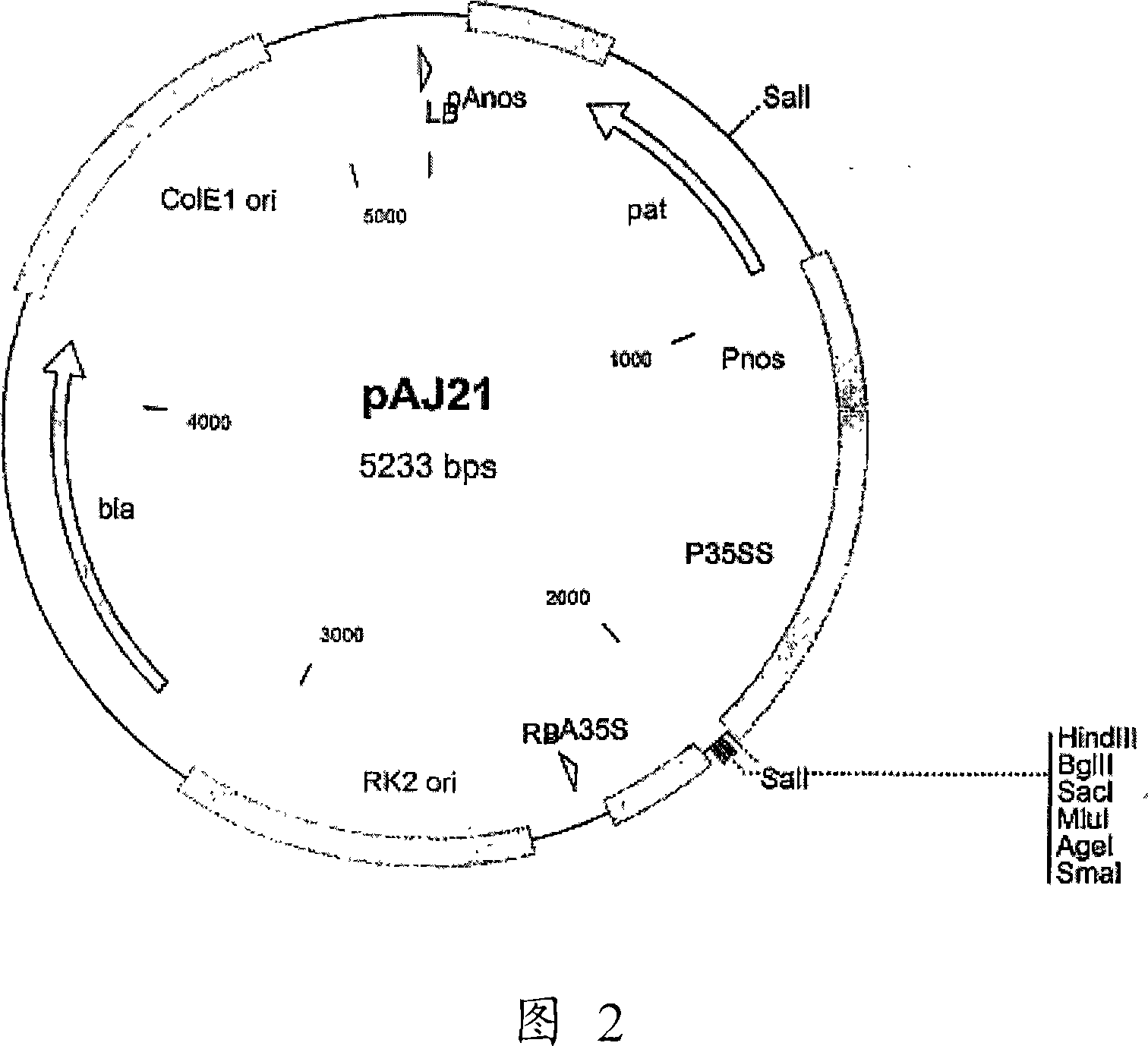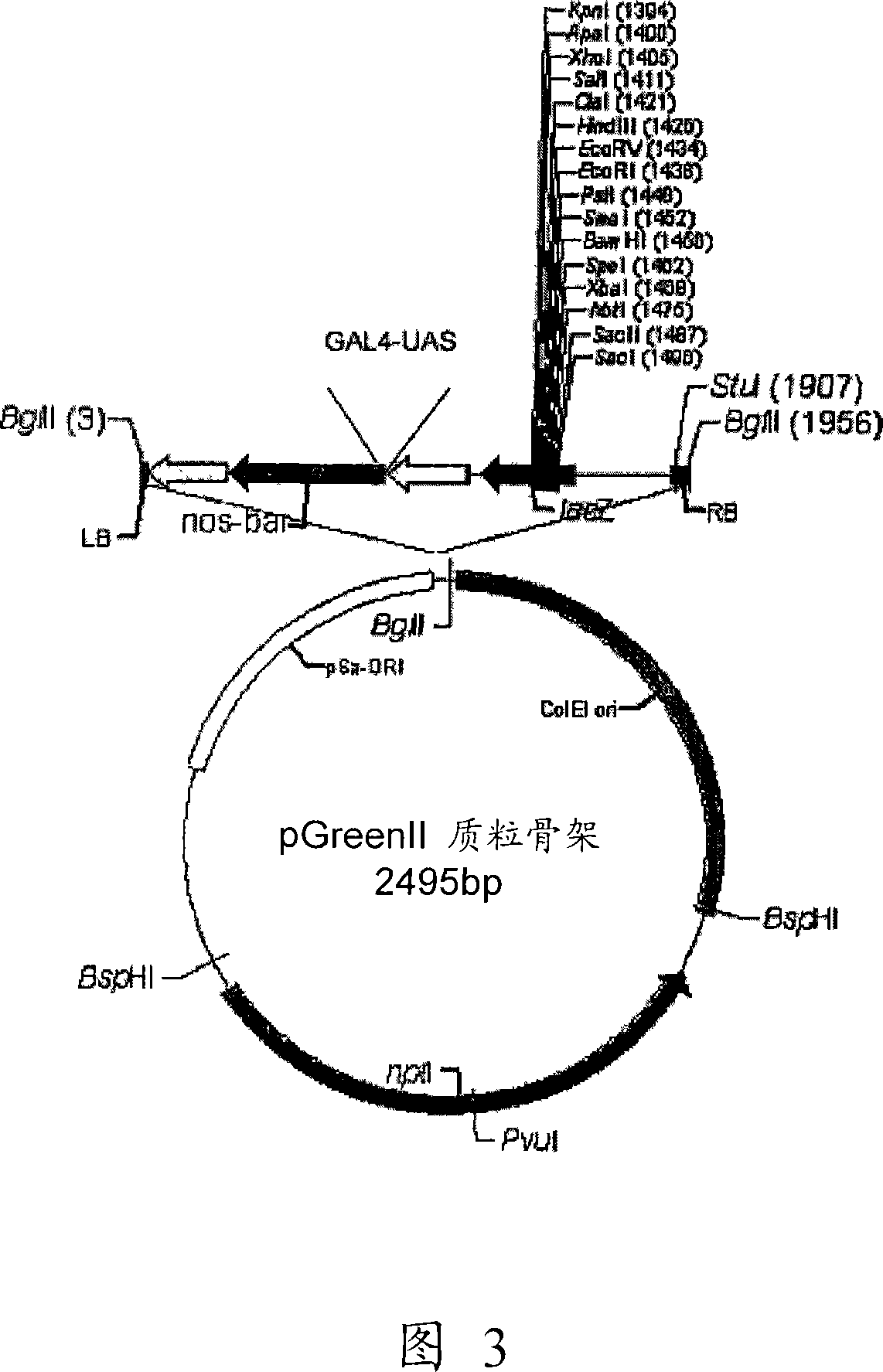Vascular plants expressing Na+ pumping ATPases
A plant and vascular technology, applied in plant products, plant genetic improvement, botanical equipment and methods, etc., can solve problems such as non-persistent production
- Summary
- Abstract
- Description
- Claims
- Application Information
AI Technical Summary
Problems solved by technology
Method used
Image
Examples
Embodiment 1
[0147] Cloning of Physcomitrella patens ENA1, ENA2 and Saccharomyces cerevisiae ENA1 cDNAs
[0148] The full-length ENA1 and ScENA1 cDNAs in the cloning vectors pCR2.1-TOPO (Invitrogen) and pJQ10, respectively, can be used such as Benito, B., and Rodriguez-Navarro, A. (2003), The Plant Journal 36 : 382-389 and Benito et al. (1997) Biochimica et Biophysica Acta 1328(2) Cloned by the method described in :214-26. The cDNAs were obtained from Alonso Rodriguez-Navarro.
[0149] The nucleotide sequence of Physcomitrella patens ENA1 cDNA is provided in GenBank Accession No. AJ564254, labeled as SEQ ID NO.1. The cDNA encodes a 967 amino acid Na + Pump ATPase, labeled as SEQ ID NO.2.
[0150] The nucleotide sequence of Saccharomyces cerevisiae ENA1 cDNAs is provided in GenBank Accession No. AJ564254, labeled as SEQ ID NO.12. The cDNA encodes a 1091 amino acid Na + Pump ATPase, labeled as SEQ ID NO.13.
[0151]Briefly, cDNAs representing the entire open reading frames of the PpEN...
Embodiment 2
[0161] Generation of Mutant Physcomitrella patens Deleting PpENA1 and / or PpENA2
[0162] Restriction fragments of PpENA1 or PpENA2 can be transferred from the cloned DNA into an appropriate vector such as pGEM-T Easy (Promega). A knockout cassette is then generated by inserting a selectable marker such as a gene that confers resistance to kanamycin, hygromycin, or the herbicide basta, into the full-length gene encoding PpENA1 or PpENA2. This cassette consists of sequences homologous to the PpENA1 or PpENA2 upstream or downstream selectable markers. Anti-G-418 resistance was obtained with the nptll gene behind the 35S-promoter from the pJIT145-Kan plasmid (Figure 6). Hygromycin resistance was obtained using the Hyg gene behind the 35S-promoter from the T-Easy 35S-Hyg plasmid (Figure 7).
[0163] Mutant mosses can be produced by transformation. Protoplasts are generated by treating protonema tissue with an enzyme that removes the cell wall. The protoplasts were treated with ...
Embodiment 3
[0166] Generation of mutant Physcomitrella patens overexpressing PpENA1 and / PpENA2
[0167] A full-length clone of PpENA2 can be obtained by designing primers specific to the 5' and 3' ends of the genomic sequence and performing PCR using cDNA as a template. A suitable overexpression vector is the pTOOL2 vector, as shown in FIG. 1 . This construct can then be used to transform mosses (as described above) and selected mutants (as described above) that overexpress PpENA1 or PpENA2 (or both).
PUM
 Login to View More
Login to View More Abstract
Description
Claims
Application Information
 Login to View More
Login to View More - R&D
- Intellectual Property
- Life Sciences
- Materials
- Tech Scout
- Unparalleled Data Quality
- Higher Quality Content
- 60% Fewer Hallucinations
Browse by: Latest US Patents, China's latest patents, Technical Efficacy Thesaurus, Application Domain, Technology Topic, Popular Technical Reports.
© 2025 PatSnap. All rights reserved.Legal|Privacy policy|Modern Slavery Act Transparency Statement|Sitemap|About US| Contact US: help@patsnap.com



